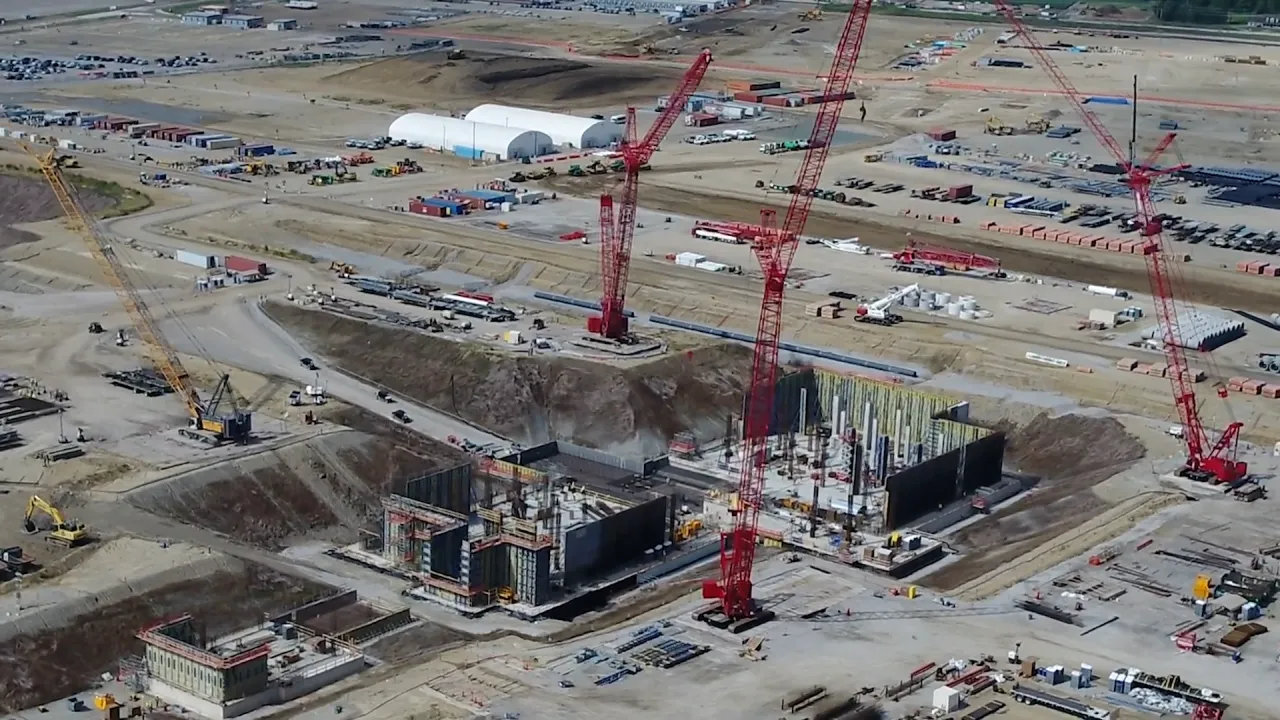The giant Intel semiconductor manufacturing plant in central Ohio, once announced as a key element of America's technological revival, is mired in delays, financial troubles, and an increasingly loud political controversy. The promised thousands of jobs, billions of investments, and the return of microchip production to American soil have turned into accusations of incompetence, fraud, and suspicious ties to China.
On Thursday, Ohio Senator Bernie Moreno, a sharp-tongued Republican, fueled the fire by joining former President Donald Trump in calling for the resignation of Intel CEO Lip-You Tan. The reason — a Reuters report that Tan invested hundreds of millions of dollars in Chinese companies linked to the Beijing government. This news sparked concern both in Washington and in Columbus. Moreno went further, calling for a federal investigation into possible fraud related to the ongoing delays in building the Intel plant in Ohio.
The $20 billion-plus project, loudly announced in 2022, was supposed to be operational by summer next year, producing advanced microchips to strengthen American supply chains. But progress has been slow as a snail. “Expecting them to start chip production by mid-2025 was unrealistic,” said Dorsey Heiger, executive secretary-treasurer of the Columbus/Central Ohio Building Trades Council. Heiger’s disappointment is palpable: Intel promised to employ up to 8,000 workers at the peak of construction, but currently only about 1,200 are on site. “There are no jobs,” he says. “There’s no momentum.”
The project’s problems are not limited to logistics. Ohio taxpayers have invested hundreds of millions in infrastructure — roads, utilities — to support the plant, but completion deadlines have been pushed back to the 2030s. State Senator Bill DeMora, a Columbus Democrat, does not hide his anger: “We were sold empty promises. There are no jobs, no economic boom, only inflated real estate prices and complete emptiness.” DeMora’s skepticism is shared by many Ohio residents, for whom the plant was supposed to be a lifeline to communities suffering from decades of industrial decline.
Intel’s shares have been falling for years, numerous layoffs have undermined trust in the company, and its ability to keep promises is in doubt. Yet, Lieutenant Governor Jim Tressel remains optimistic, insisting that Intel is not backing down from its “billion-dollar bet” on Ohio. “Big things are complicated,” Tressel said in an interview on Thursday. “It’s a volatile industry, but they’ve already invested significant capital. They won’t walk away.” When asked whether Ohio residents have a right to be angry that their taxes are funding a project with no clear prospects, Tressel expressed understanding but emphasized “contractual commitments” that, in his view, will compel Intel to deliver on its promises.
Political stakes are rising. Moreno and Senator J.D. Husted, who helped attract Intel to Ohio in 2022 when he was lieutenant governor, openly criticize the company’s leadership. However, Husted has taken a more restrained stance than Moreno’s sharp call for resignation. “If someone is connected to the Chinese Communist Party, that’s a problem,” Husted said. “But we need to wait for the facts.” Governor Mike DeWine supported this cautious approach, emphasizing that Ohio takes a hard line on any ties to the CCP. “We don’t trust them, we don’t like them, they’re not our friends,” DeWine said in Dayton. “But in this case, we need facts before drawing conclusions.”
Intel’s response was measured. In a statement issued Thursday evening, the company avoided direct comments on Tan’s investments, instead emphasizing its commitment to American manufacturing. “Intel, its board of directors, and Lip-You Tan vigorously support the national and economic security interests of the United States,” the statement says, mentioning the company’s $20 billion Arizona plant and its 56-year history of innovation in the U.S. But the lack of specifics about the Ohio project did little to reassure local skeptics.
For DeMora, prospects are bleak. “Intel is dead,” he said decisively. “We will never see that plant.” Meanwhile, DeWine remains hopeful, though he acknowledged that the state will not recoup its investments before at least 2029, when Intel’s contractual obligations are due. “I still believe they will produce chips in Ohio,” he said. “But it will take time.”
While political heavyweights like Trump and Moreno are raising tensions, and Ohio taxpayers are losing patience, the ambitious Intel project in Ohio has become a test — not only for the company but also for America’s broader goal of regaining leadership in the global technological race. Currently, the construction site in Licking County remains a massive symbol of unfulfilled promises, and its future is as uncertain as the industry it was supposed to transform.


